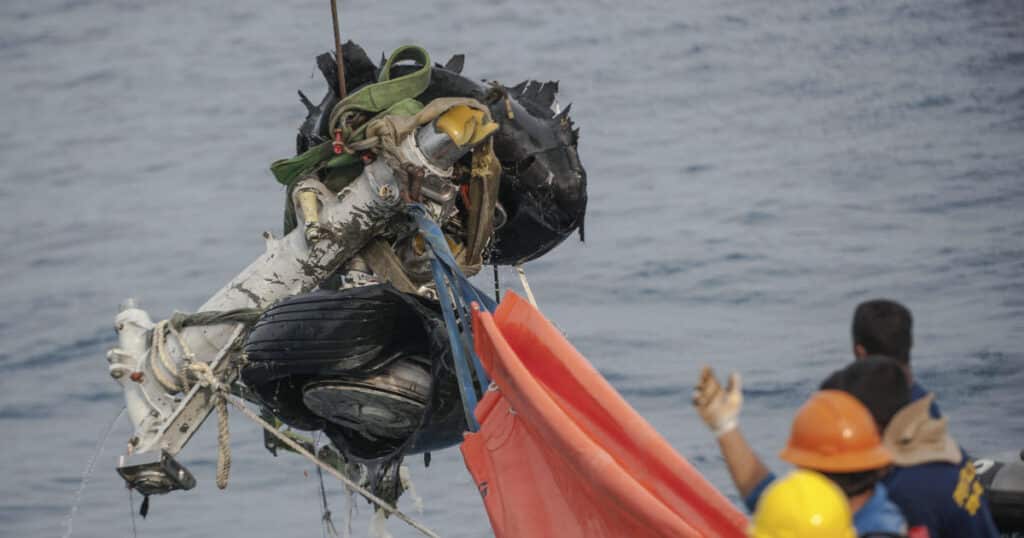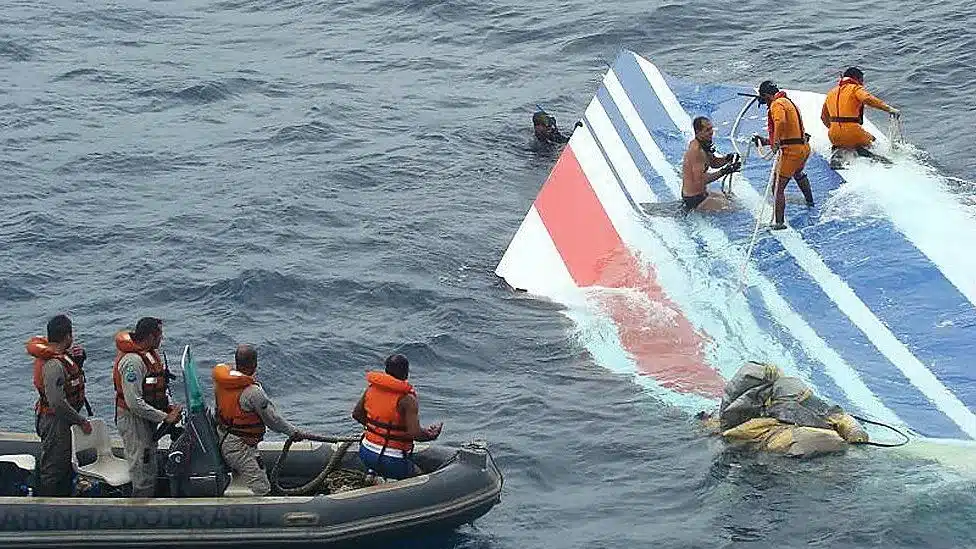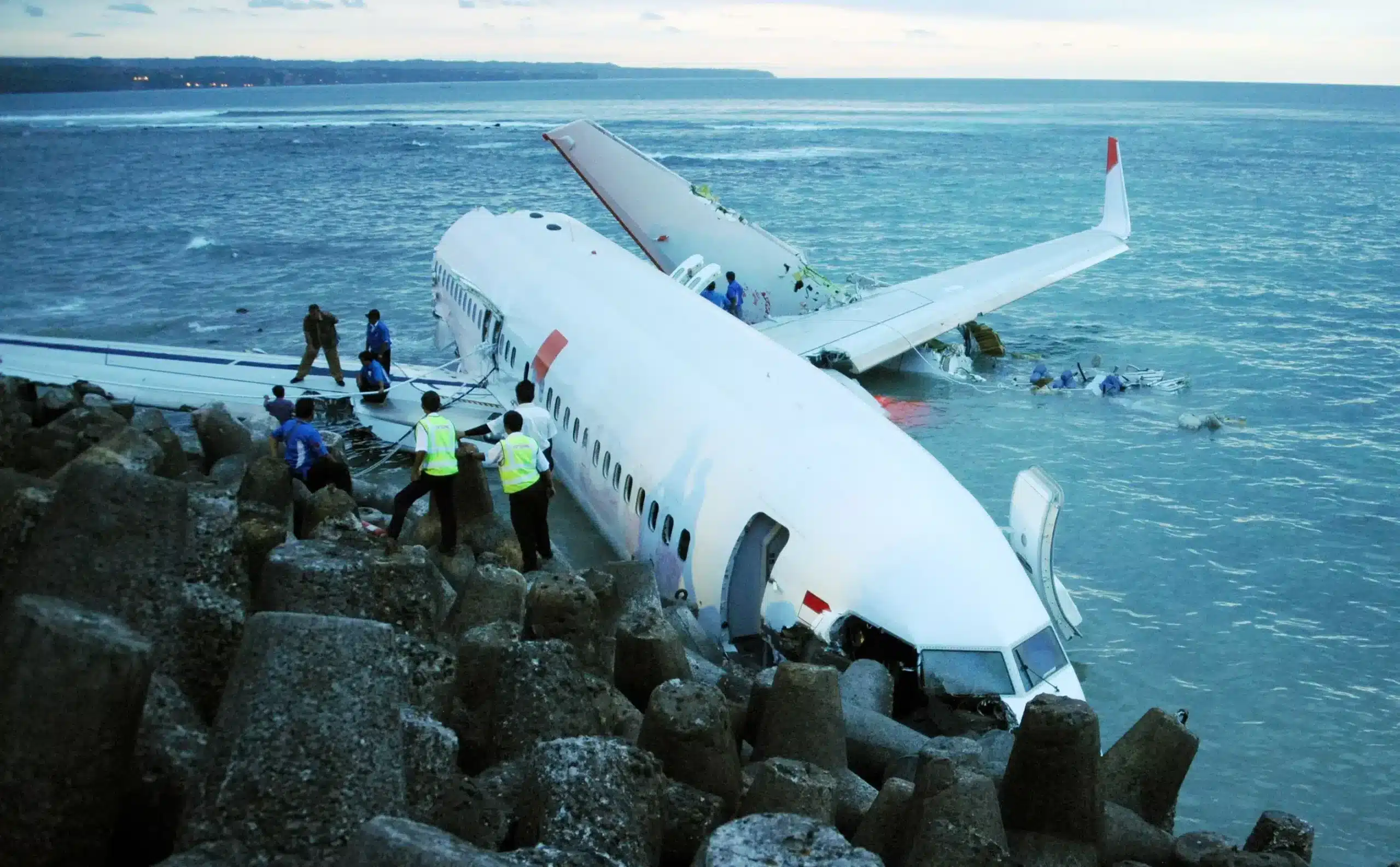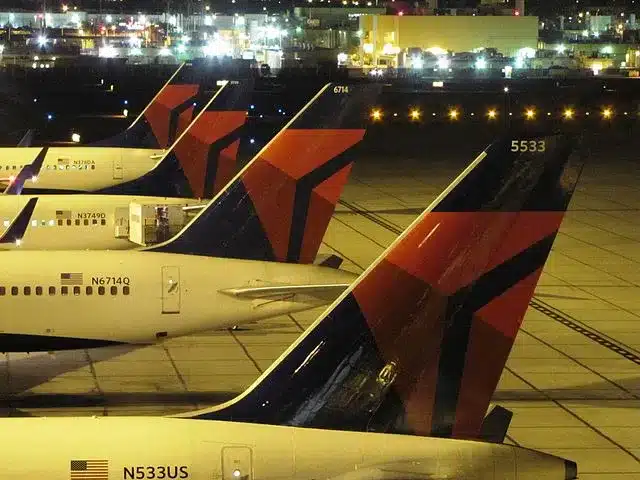Enhancing Pilot Skills : The Role of Human Performance in LOC I Incidents
Loss of Control In-flight or loc-i, is when a pilot (or pilots) lose control of the aircraft and fail to recover.
LOC-I is the biggest cause of fatal accidents in commercial aviation and involves multiple “interferences” such as stalls, weather and mechanical failures.
In most cases it happens fast. And in critical flight phases, such as Take-off or Landing. “Startle Effect” can shock the cockpit crews and destroy their situational awareness. CRM (Crew Resource Management) training helps, but a recent IATA report points to a number of factors that need to be added to pilot curricula.

Loss of Control
The report showed that LOI-I is a broad category of causality, making it a challenge to create good guidance for pilots. It involves the design of the aircraft itself, the engine types and pilot training. LOC-I is also the correct term (So stop using “Pilot Error”). We need to look at these incidents as “System failures” and not individual failures. System design and HMI (Human Machine Interfaces) should give pilots what they need to prevent an unrecoverable situation.
And what about emerging technologies, like eVTOLS and hybrid powered aircraft? Might they suffer the same loss of aircraft control? or will we just switch to remote-piloted aircraft and put our trust in AI?.
Fatal Accidents in Commercial Aviation
So who classifies these accidents?. That would be the Accident Classification Technical Group (ACTG).
Let’s look at 3 Case Studies of loss of control in-flight accidents. To better understand the levels of complexity as reported by IATA.
Case study One: 01st June 2009 - Airbus A330-200 - Air France
While cruising at 35,000 feet above the Atlantic Ocean, the A330 entered clouds within the inter-tropical convergence zone (ITCZ). Airspeed readings suddenly went haywire, causing the autopilot and autothrust to disconnect, triggering the stall warning. The pilots lost control, leading to a crash into the sea. The investigation revealed that the accident was triggered by large ice crystals obstructing the pitot probes, temporarily rendering the airspeed indications unreliable.
Aerodynamic Stall
This phenomenon was known, but not fully understood by the aviation industry at that time. The loss of accurate airspeed led the flight control computers to switch to a more basic mode, resulting in the loss of certain flight envelope protections – including low-speed stall prevention.
This disconnected the autopilot and auto-thrust systems. The suddenness of the warnings and anomalous indications caught the pilots off guard, contributing to their failure to address the situation.
Case study Two: 12th Nov 2001 - A300-600 - American Airlines
AA587 departed shortly after a larger four-engined aircraft – entering its wake vortex turbulence during the initial climb. While the turbulence itself wasn’t catastrophic, the pilot flying made sudden and severe control inputs. This exceeded the load capacity of the vertical fin, causing it to detach.
The aircraft lost stability and crashed. Upon investigation, it was revealed that the pilot had undergone previous upset recovery training, but not for the Airbus A300-600.
Case study Three: 27 Nov 2008 - A320-200 - XL Airways
XL’s A320 was undergoing an “acceptance” test-flight after scheduled maintenance. Water had mistakenly made its way into the angle of attack sensor vane, due to an error. As the aircraft reached higher altitudes, the water froze. Jamming the AOA vane and rendering the low-speed warnings inoperable.
As part of the test schedule, the pilots intentionally entered a low-speed regime. This led to the aircraft stall which they couldn’t recover from.
And time is the key word.
Our piece on the B73Max (MCAS) showed similar events. Pilots desperately trying to diagnose a problem, distracting them from flying the aircraft.

IATA LOC i Classification Task Force
The Collaborative LOC-I Program
After ICAO’s Loss of Control In-flight (LOC-I) Symposium in Montreal back in May 2014, there has been substantial industry backing for a unified and coordinated effort to tackle LOC-I incidents. As a result, a collaborative LOC-I program has been established, with international associations and organizations partnering with ICAO to achieve the following objectives:
- Create content and facilitate regional workshops focused on LOC-I and Upset Prevention and Recovery Training (UPRT).
- Identify and develop tools that aid in preventing LOC-I events.
- Ensure convenient accessibility to these tools through this website.
This joint initiative aims to enhance aviation safety by effectively addressing and mitigating the risks associated with Loss of Control In-flight incidents. Will they?
Contributing Factors to Aviation Accidents
The Industry Standard is UPRT (Upset Prevention and Recovery Training). Pilots, in the simulator, putting their aircraft into stalls and learning how to recover back to stable flight. But this is just one symptom of a bigger problem.
Numerous contributing factors (some of which occur in combination) contribute to LOC-I accidents.
These accidents are often brought on by problems with an aircraft’s systems, weather, and/or pilot mistakes. Making mitigation plans should benefit from the identification and study of common contributing variables for LOC-I accidents. Not everyone agrees…
““We are concerned where official final accident reports fail to allocate cause to what were clearly human-factors failings. These reports would sometimes discover and remark upon the human failing but then move on to cite such effects as startle, surprise and/or illusions as the primary cause of the event. Or cite the failure of some technical system that should have been well within the capability of properly trained pilots..”
– Capt John Leahy, Ryanair
IATA assigns contributing factors to accidents through the ACTG in order to better understand the relationships. The contributing elements are broken down into the following categories according to a Threat and Error Management (TEM) structure:
● Latent Conditions: Conditions present in the system before the accident and triggered by various possible factors.
● Environmental and Airline Threats: An event or error that occurs outside the influence of the flight crew, but which requires crew attention and management if safety margins are to be maintained.
● Flight Crew Errors: An observed flight crew deviation from organizational expectations or crew intentions.
● Undesired Aircraft States: A flight crew-induced aircraft state that clearly reduces safety ma
LOC-I Accident Data
64 LOC-I accidents resulted in 2,462 fatalities during the course of ten years, from 2009 to 2018. With the biggest number of fatalities and second-highest number of hull loss incidents during that time – LOC-I was the most common fatal accident category.
Flight Regime
Because they can be caused by a variety of contributing factors LOC-I accidents fall under the category of complex accidents. The IATA report indicates a wide range of contributing factors to a LOC-I accident. A LOC-I accident sequence is frequently started by an external environmental cause, most frequently a meteorological one.
The following human performance shortcomings also typically exacerbated the initial affliction and prevented a successful recovery until it was too late:
Automation and flight mode confusion
Distraction
Startle effect
Loss of situational awareness
Airplane Configuration
LOC-I is frequently associated with flying an airplane at a speed below stall speed. Stall and upset awareness and recovery training (as well as approach to stall recovery training) needs to be addressed even with fully protected aircraft. Additionally, insufficient pre-flight briefings or preparation, disregard for SOPs, and in-flight decision-making are elements that point to poor judgment, CRM, and/or insufficient training.
Improved CRM training concentrates on situation awareness, communication abilities, efficient flight path monitoring for prevention and threat mitigation.
The breakdown of LOC-I accidents by type of aircraft powerplant makes interesting reading. 27 accidents, or 42% of all LOC-I accidents, featured commercial jet aircraft. Whereas 37 accidents, or 58% of all LOC-I accidents, involved turboprop operations.
Which made up a smaller number of all sectors flown. According to the data, there were no jet LOC-I accidents in 2015 or 2017, but four in 2018. The four jet LOC-I incidents in 2018 were more than the ten-year study period’s average of three accidents each year. While there were no accidents involving turboprop aircraft in 2018.
All fatal jet aircraft LOC-I accidents occurred while in the cruise phase. In contrast, only one of the 35% of turboprop LOC-I incidents that occurred during ICL resulted in no fatalities.
Both jet and turboprop LOC-I accidents continue to be caused by failure to notice deteriorating weather. When there is a/an: jet or turboprop accident is likewise more likely to happen.
Annual Safety Review
Key LOC-I Report Findings – Contributing Factors
- Aircraft System malfunction
- Loss of engine power before losing control in Instrument Meteorological Condition (IMC)
- Vertical/Lateral/speed deviation
- Icing Conditions
- Operation outside of the aircraft limitation
How to Improve Safety
The lack of (or delayed decision) by pilots to take over control manually (in certain cases their failure to do so) is one of the frequently mentioned causes of LOC-I.
According to several accident investigation reports, the pilots provided insufficient or even late flight control input after the situation had virtually reached an unrecoverable point. Improved CRM practices, prompt in-flight decision-making, communication, and flight path monitoring ought to reduce the likelihood of LOC-I incidents.
Guidance Material
To help operators improve their training for developing monitoring abilities for pilots in line operations, IATA has published guideline material for Improving Flight Crew Monitoring. The operator’s training should emphasize the cognitive abilities required for monitoring and should specify that monitoring be tailored to phase of flight.
Aircraft In Flight
In order to verify training success flight crew member duties and responsibilities, training data should also be gathered and utilized. A Flight Safety Foundation (FSF) publication offers one example of how to manage cognitive resources by applying the notion of Area of Operation. The objective is for airlines to monitor issues globally and consistently, and to make sure that the SOPs do not contradict with one another.

Training for Loss of Control In Flight
It is crucial to be aware of potential precursors that could cause LOC-I and to create strategies for dealing with them. These latent conditions leading to manual handling, communication, and application of SOPs are high on the errors list. Leading to undesirable aircraft speeds and vertical/lateral flight path deviations.
Upset Prevention and Recovery Training
Pilot awareness is one of the best LOC-I defenses. Prioritizing tasks and making decisions in the cockpit are also crucial. At all times, pilots must pay attention to controlling the aircraft. This especially true at low altitudes. Flying at low altitudes, particularly in bad weather, can lead to poor environmental judgment and poor decision-making.
Bank Angle
In order to avoid LOC-I, pilots are advised to always keep an eye on their instruments, control their distractions, be aware of their aircraft’s limitations and crucial Angle of Attack (AOA) thresholds, and adjust their power or pitch as needed. Prevention is always important because in some circumstances, if LOC-I occurs at low altitude, a safe recovery may not be possible.
In order to determine when an airplane is nearing a stall, has stalled, or is in an upset condition, pilots must learn the skills and disciplines necessary. To stop the emergence of an unrecoverable LOC-I situation, pilots must also identify the upset in its earliest phases. And take immediate recovery action.
Aircraft Stall Recovery Response
The last line of defense consists of pilots actively cross-checking each other’s actions during the crucial stages of flight. While also effectively monitoring the aircraft’s flight path and systems.
Without this, a mistake can go unnoticed and risk repercussions or result in an undesirable state. Increasing monitoring and cross-checking increases a pilot’s chances of spotting errors before they happen.
It’s crucial that pilots receive training to identify the flight phases where subpar monitoring might cause the most trouble. In order to maximize monitoring during such areas of vulnerability (AOV), pilots should strategically organize their workload.
Loss of Airplane Control
Because lift is produced on the wings of fixed-wing aircraft, wake vortices are produced by all fixed-wing aircraft. In order to rotate toward the lower pressure above the wing, the higher pressure air below the wing has a tendency to flow outward. The circular flow is left behind as a helical motion in free air because the wing is always going ahead.
Environmental Factors
The ‘downwash’ effect at the trailing edge of the wing also causes the vortices to tend downward. As a result of lift being intrinsically connected to aircraft weight, heavier aircraft produce stronger wake vortices. The amount of motion within the vortices is dependent on a variety of variables, including aircraft speed and wing form.
The length of the vortices’ lifetimes is also influenced by a number of other factors, but the greatest durations, which average three (3) minutes, can be occur in quiet air lower down and in the thinner atmosphere at high altitude.
Pilots Skill Response levels
The ability and skill level of the pilots to control disturbances or system degradations ultimately determines how any contact with environmental dangers turns out. This might be as easy as checking the automation to make sure airspeed and flight direction is maintained.
There is growing evidence that the “startle” effect can seriously impair performance for some time after an event and result in impaired judgement and incorrect decision making. Pilots would always be weather-aware and as such these events would be less likely to cause startle.
But a growing body of research shows that the “startle” impact can substantially affect performance for some time after the incident, impair judgment, and result in poor decision-making. It’s widely acknowledged that modern flight operations heavily rely on automation, manual flying abilities may still be needed on short notice. Mostly in difficult weather to avoid a potential LOC-I crisis. Additionally, physiological issues including eye problems, decreased manual dexterity, and even weariness may have an impact on performance.







